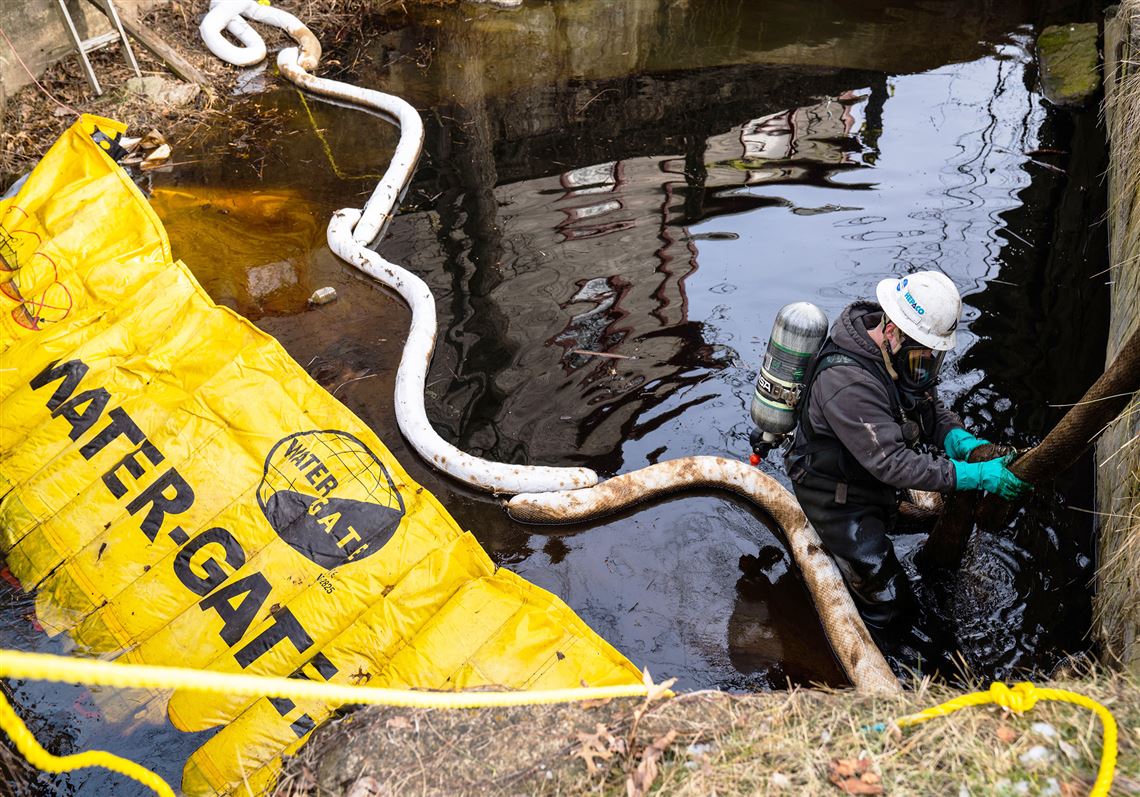Toxic Chemicals From Ohio Train Derailment: Months-Long Building Contamination

Table of Contents
Types of Toxic Chemicals Released and Their Impact on Buildings
The derailment released a cocktail of hazardous substances, many of which are persistent and capable of contaminating building materials for extended periods.
Vinyl Chloride: A Persistent Threat
Vinyl chloride, a known carcinogen, is particularly concerning due to its volatile nature and ability to infiltrate building structures.
- Methods of Contamination: Vinyl chloride contaminates buildings through air infiltration, settling as dust in porous materials like insulation and drywall. It can also permeate through cracks and gaps in building structures.
- Health Effects: Exposure to vinyl chloride is linked to a range of serious health problems, including liver cancer, brain tumors, and other forms of cancer. Long-term, low-level exposure can also cause various respiratory issues.
Other Hazardous Materials: A Complex Contamination Scenario
Beyond vinyl chloride, other chemicals released, such as butyl acrylate and ethylene glycol monobutyl ether, pose significant health risks and contribute to building contamination.
- Persistence in Building Materials: These chemicals can persist in various building materials, especially porous ones like wood, fabrics, and insulation. The exact persistence depends on the chemical's properties and the material it contaminates.
- Health Risks and Sources: Butyl acrylate can cause skin and eye irritation, respiratory problems, and even central nervous system effects. Ethylene glycol monobutyl ether can affect the kidneys, liver, and nervous system. Detailed toxicity information is available from sources like the Agency for Toxic Substances and Disease Registry (ATSDR) and the National Institutes of Health (NIH).
Extent of Building Contamination: Geographic Reach and Affected Structures
The geographic area impacted by the chemical plume from the Ohio train derailment is significant, affecting numerous buildings across multiple communities.
Mapping the Contamination Zone: A Widespread Issue
The exact extent of the contamination zone is still being determined, but several towns and neighborhoods in the vicinity of the derailment site are experiencing elevated levels of toxic chemicals.
- Affected Building Types: Residential homes, commercial buildings, industrial facilities, and even schools are potentially impacted, with the level of contamination varying depending on proximity to the derailment site and building characteristics.
- Data Visualization: While detailed maps are still emerging, various news outlets and environmental agencies are providing updated information and visualizations of the affected area.
Assessing the Damage: Challenges in Determining Contamination Levels
Accurately assessing the extent of building contamination is challenging, particularly in older structures with less-defined ventilation systems.
- Methods of Assessment: Air and surface sampling, as well as material testing, are employed to determine the presence and concentration of toxic chemicals.
- Challenges in Older Buildings: Older buildings present unique challenges due to their construction materials and ventilation systems, often making it harder to effectively pinpoint and remove contamination.
Long-Term Health Risks and Mitigation Strategies
The long-term health consequences of exposure to the toxic chemicals released in the Ohio train derailment are a major concern.
Health Concerns for Residents: A Multifaceted Threat
Residents in the affected areas face potential long-term health consequences from exposure to these toxins.
- Potential Health Impacts: These include respiratory problems (such as asthma and bronchitis), neurological issues, various cancers, and other chronic illnesses.
- Support Resources: Affected residents should seek medical attention if experiencing health issues and utilize available support resources, such as local health departments and community organizations.
Remediation and Cleanup Efforts: A Lengthy and Complex Process
The cleanup process is extensive, facing numerous logistical and technical challenges.
- Remediation Techniques: Methods include air filtration, surface cleaning, and, in severe cases, the removal and replacement of contaminated building materials.
- Cost and Time Involved: The remediation process is costly and time-consuming, potentially taking years to complete depending on the extent of the contamination.
Legal and Regulatory Responses to the Ohio Train Derailment
The Ohio train derailment has sparked significant legal and regulatory responses.
Accountability and Legal Actions: Seeking Justice for the Affected
Lawsuits have been filed against the railroad company and other potentially responsible parties.
- Key Legal Arguments: These lawsuits allege negligence and seek compensation for damages, including property damage, health problems, and economic losses.
- Status of Investigations: Government agencies are also conducting investigations to determine the causes of the derailment and to assign accountability.
Regulatory Changes: Improving Safety and Prevention
The disaster has prompted calls for stricter regulations and improved safety measures.
- Proposed Changes: New regulations might involve stricter transportation of hazardous materials, improved rail safety measures, and enhanced emergency response protocols.
- Environmental Protection Measures: Increased emphasis will likely be placed on environmental protection measures to prevent and mitigate future environmental disasters.
Conclusion
The toxic chemicals from the Ohio train derailment have caused widespread and long-lasting building contamination, posing significant health risks and demanding extensive remediation efforts. The extent of the contamination, the diverse types of chemicals involved, and the potential for long-term health problems underscore the severity of this environmental disaster. The ongoing legal battles and calls for regulatory changes highlight the need for accountability and improved safety protocols to prevent similar catastrophes. Learn more about the continuing effects of the toxic chemicals from the Ohio train derailment and how you can help prevent future environmental catastrophes by contacting your local health department, supporting affected communities, and advocating for stronger environmental regulations. Stay informed and demand accountability.

Featured Posts
-
 New Study Minnesota Immigrant Workers See Increased Earning Potential
Apr 29, 2025
New Study Minnesota Immigrant Workers See Increased Earning Potential
Apr 29, 2025 -
 The Pete Rose Pardon Examining Trumps Potential Action And Its Fallout
Apr 29, 2025
The Pete Rose Pardon Examining Trumps Potential Action And Its Fallout
Apr 29, 2025 -
 Russias Military Buildup What Concerns Europe
Apr 29, 2025
Russias Military Buildup What Concerns Europe
Apr 29, 2025 -
 The Ftcs Investigation Of Open Ai And Chat Gpt Key Questions And Potential Outcomes
Apr 29, 2025
The Ftcs Investigation Of Open Ai And Chat Gpt Key Questions And Potential Outcomes
Apr 29, 2025 -
 Cassidy Hutchinson January 6th Hearing Witness To Publish Memoir This Fall
Apr 29, 2025
Cassidy Hutchinson January 6th Hearing Witness To Publish Memoir This Fall
Apr 29, 2025
Latest Posts
-
 Why Older Viewers Are Choosing You Tube For Classic Tv And Movies
Apr 29, 2025
Why Older Viewers Are Choosing You Tube For Classic Tv And Movies
Apr 29, 2025 -
 Finding Nostalgia Older Adults Embrace You Tube For Classic Tv
Apr 29, 2025
Finding Nostalgia Older Adults Embrace You Tube For Classic Tv
Apr 29, 2025 -
 You Tube A New Home For Older Viewers Favorite Shows
Apr 29, 2025
You Tube A New Home For Older Viewers Favorite Shows
Apr 29, 2025 -
 Finding Comfort And Nostalgia Older Viewers On You Tube
Apr 29, 2025
Finding Comfort And Nostalgia Older Viewers On You Tube
Apr 29, 2025 -
 You Tubes Resurgence Why Older Viewers Are Returning
Apr 29, 2025
You Tubes Resurgence Why Older Viewers Are Returning
Apr 29, 2025
